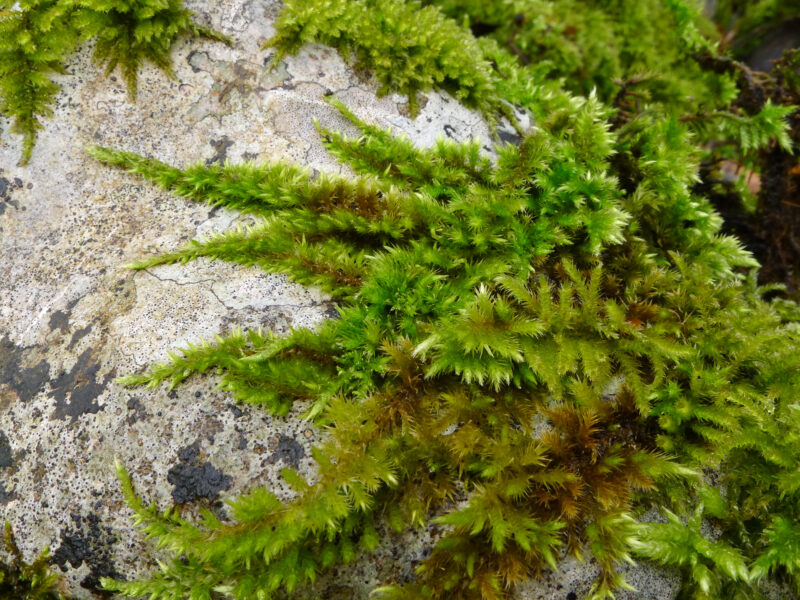Identification notes
When dry, the distinctive curled-up look of the crowded secondary branches shoots make this common species relatively easy to identify and will serve to separate it from H. lutescens, which has straight secondary branches when dry. H. sericeum also creeps around and adheres closely to substrates whereas H. lutescens forms lax tufts that disintegrate easily. Both species, however, are calcicoles with a similar glossy, yellow-green appearance. Habitat is also usually a good differentiator; H. sericeum grows on walls, trees and other basic substrates but not on the ground whilst H. lutescens is very characteristic of calcareous grassland where it often grows with other robust pleurocarps. However, there is a form of this species that grows on rock ledges and other hard surfaces so care must be taken when identifying them. A good tip is to let the plants dry out and then any curling tendencies of the branches should become clear. Under the microscope the base of the leaf of H. sericeum is more conspicuously toothed than H. lutescens.
When moist it is possible to mistake it for a Brachythecium, and you will need to look closely at the leaves which are much more narrowly triangular and more pleated than our Brachythecium species.
Read the Field Guide account














